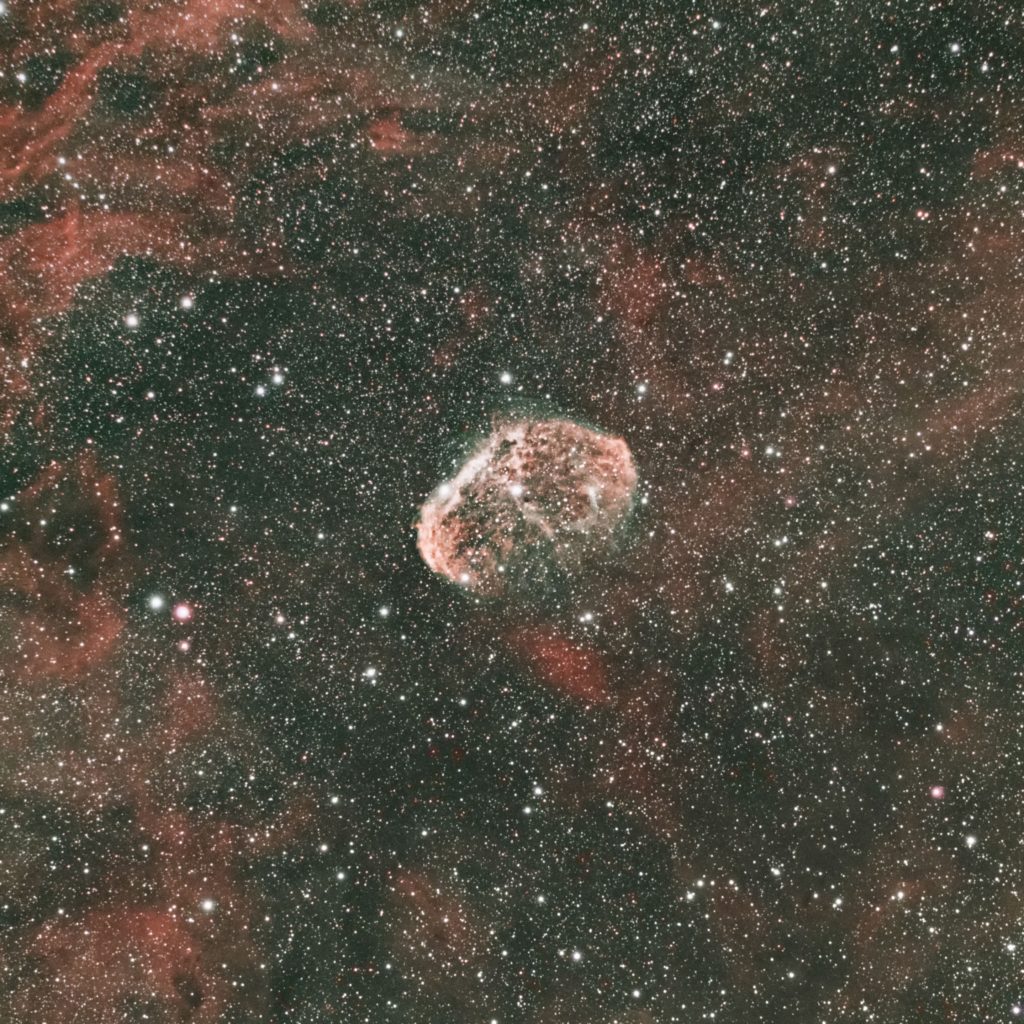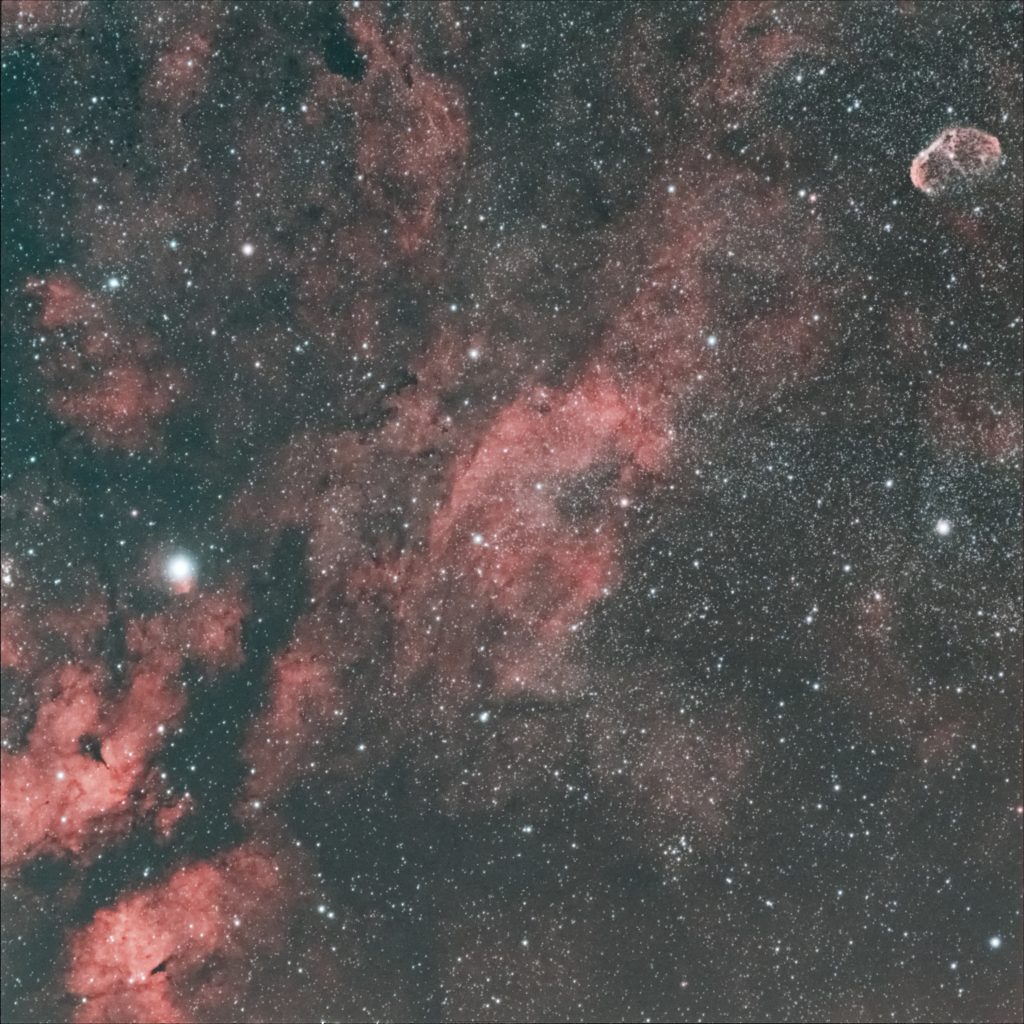
Of the many deep-sky sights in the constellation Cygnus along the rich band of the northern Milky Way, the Crescent Nebula (NGC 6888) isn’t the biggest or brightest, but it still finds its place on the target list of many astrophotographers and visual observers. This shimmering and intricate arc of glowing gas presents a rare example of a massive star in its end stages as it ejects mass at a furious rate on its way to a violent demise as a supernova.
Located near Sadr, the star at the heart of the celestial swan, the Crescent Nebula gains its radiance from a Wolf-Rayet star. Called WR 136, and just 4-5 million years old, this immense star has quickly burned through its store of fuel and now ejects mass from its outer layer at a rate of nearly one full solar mass every 10,000 years. This fast-moving hot gas, which moves at a speed of 2,000-3,000 km/s, collides with cooler gas ejected by the star during its younger and quieter days, and the collision excites the scant hydrogen and oxygen gas to radiate light. Massive and mass-losing Wolf-Rayet stars such as WR 136 are rare: there are only about 150 such stars known in the Milky Way.

Like many Wolf-Rayet stars, WR 136 will likely detonate as a supernova when it finally runs of fuel. The explosion will obliterate the nebula and most other material within several dozen light years. In its place will be a new type of nebula – a supernova remnant – that consists of a rapidly expanding shock wave that excite the scant atoms lingering in the interstellar medium. Some research with infrared-sensitive telescopes suggests a supernova remnant already surrounds the Crescent Nebula which may be the result of a companion of WR136 that blew up long ago. But these studies remain inconclusive.
The Crescent Nebula is spread out over about 25 light years and lies at a distant 4,700 light years. Because of its size and great distance, it’s not the easiest object to see visually. You’ll need a telescope of 4″ to 6″ aperture and very dark and clear sky. Look for the nebula just 2.7º southwest of the star Sadr (γ Cygni), which itself anchors a tremendously rich complex of unassociated nebulosity (see image below). The Crescent Nebula spans about 1/3 of a degree in its longest dimension. A nebula filter – either an OIII filter that passes faint green light at 501 nm or a UHC that passes both OIII and H-Beta (at 486 nm) – can help improve the contrast of the nebula. In less than very dark sky, such a filter is all but essential to spot the nebula.

For imagers, a filter that also passes H-alpha in the red at 656nm, a wavelength captured by astronomy cameras but at which the eye has little sensitivity, improves image contrast. Such a filter should also block UV and IR wavelengths to help deliver sharp star images. The images on this page were produced with an Tele Vue 85mm refractor, a ZWO ASI533MC-Pro camera, and an Optolong L-eNhance filter.
Visually in a 6” or larger telescope, the nebula resembles an ethereal crescent moon. Larger scopes can reveal a central bar within the crescent that gives the nebulae the appearance of a “euro” symbol. In longer-exposure images, NGC 6888 takes on the unnerving appearance of a glowing and intricate cosmic brain. Deeper images reveal ever more subtle structure that hints at the complex distribution of gas and the propagating shock wave from the central star.
Share This: